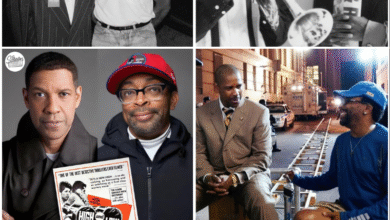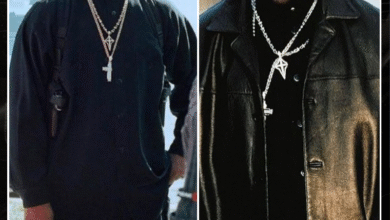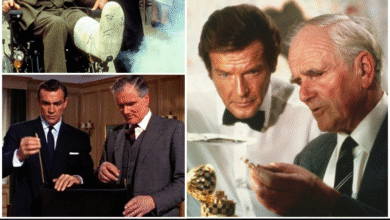Why Angelina Jolie’s Portrayal of Maria Callas Left Opera Fans Wanting More: A Disappointing Take on Her Music Career
OPINION: This article may contain commentary which reflects the author's opinion.
Angelina Jolie’s portrayal of the legendary opera singer Maria Callas in the 2024 biographical drama Maria has sparked a range of reactions from audiences, many of whom had different expectations about the film’s focus. While Jolie’s performance has garnered attention, the film’s focus on Callas’s personal struggles rather than her celebrated music career has left many fans disappointed. This analysis delves into why the movie, and its representation of Callas’s life, may not align with the expectations of her admirers.
A Film About the Final Days of Maria Callas
Directed by Pablo Larraín, Maria is a biographical film that centers on the last seven days of Maria Callas’s life. Set in 1977, it explores the opera singer’s reflection on her life and career as she contemplates her attempt to make a comeback after years of absence from the stage. Rather than celebrating Callas’s peak years as one of the most revered sopranos of the 20th century, the film zeroes in on her decline, her struggles with her health, and the emotional turmoil she faced in her final days.
While this is an undeniably poignant chapter of her life, the decision to focus on her deteriorating health and loss of voice left some viewers disillusioned. Callas, known for her unforgettable performances in Tosca, Norma, and Carmen, was a groundbreaking figure in the world of opera, and many had hoped for a film that would capture the passion and vibrancy of her musical achievements, rather than her last, painful years.
Disappointment Among Fans
Opera fans, in particular, expressed disappointment with the film’s portrayal of Callas. Many hoped for a biopic that would celebrate her musical legacy, which included her pivotal role in reviving the bel canto operas of the 19th century. Instead, the movie’s focus on Callas’s struggles during her later years, including her troubled farewell tour in 1973-1974, overshadowed the triumphs of her earlier career (San Francisco Classical Voice).
Reviews from outlets like The Los Angeles Times and The Guardian pointed out that the film’s narrative emphasized Callas’s decline rather than her remarkable career. Opera enthusiasts, who revered her for her vocal virtuosity and her captivating stage presence, found the portrayal of her decline a poor reflection of her true legacy (The Guardian). This emphasis on pathos, rather than on the artistry and magic that defined Callas’s performances, left many longing for a deeper exploration of her achievements as an artist.
Criticism of Angelina Jolie’s Performance
While Angelina Jolie’s portrayal of Callas was a central draw for the film, it did not escape criticism. To bring authenticity to her role, Jolie underwent seven months of opera training to perform Callas’s songs. However, critics noted that her performance felt “affected and stagy,” and failed to capture the raw emotion and presence that made Callas such a magnetic figure on stage (San Francisco Classical Voice).
Jolie’s portrayal of Callas also faced criticism for not fully embodying the legendary singer’s persona. While she was praised for her physical resemblance and ability to replicate Callas’s mannerisms, critics noted that the absence of Callas’s distinctive smile and her New York accent made the portrayal feel incomplete (Los Angeles Times). Instead of capturing the essence of the artist, the film was said to focus more on glamour shots and poses, offering little insight into Callas’s true identity beyond her physical appearance. This portrayal, while visually stunning, left many fans unsatisfied with the representation of such a complex and iconic woman.
Mixed Reception
At its premiere at the 81st Venice International Film Festival, Maria initially received positive applause, with some audience members visibly moved by Jolie’s performance (IndieWire). However, the critical reception after the film’s release, particularly from opera fans, was lukewarm. The movie’s shift in focus from celebrating Callas’s remarkable musical legacy to her emotional struggles seemed to have missed the mark for many viewers who had hoped for a more balanced exploration of her life as an artist.
The film also contributed to a broader industry trend, as seen with movies like Tár and Maestro, in which iconic classical musicians are often portrayed in a way that emphasizes their personal and professional struggles rather than their brilliance (Los Angeles Times). This trend has sparked ongoing discussions about the ways in which the film industry portrays such figures, with many feeling that these depictions fail to honor the complexity and beauty of the artists’ work.
Conclusion
Maria, while undoubtedly a poignant exploration of Maria Callas’s final days, may not have been the movie many fans expected. The decision to focus on her personal struggles, rather than her celebrated musical achievements, disappointed those who wanted a film that captured the spirit and artistry of one of opera’s most enduring figures. Angelina Jolie’s portrayal, though earnest and committed, failed to completely embody the essence of Callas, leaving viewers wanting a more authentic exploration of her legacy. As a result, Maria stands as a biographical film that, while emotionally charged, may not resonate with those seeking to celebrate the true magnitude of Maria Callas’s life and career.



